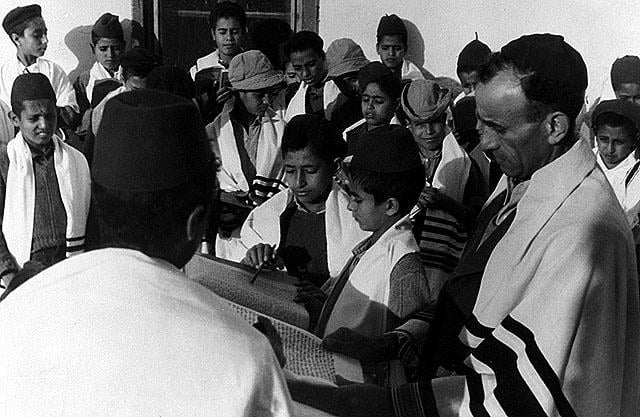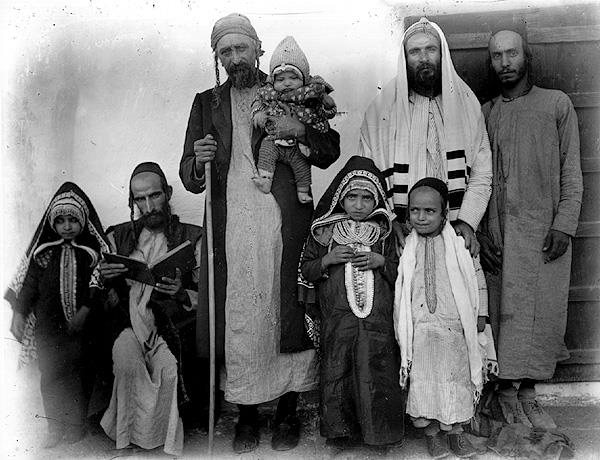Just like in the different categories of popular culture, where there are big and widely known names, including creators, writers or performers – the very mention of whose name is enough to spark interest or cause people to take out their credit card – there are also the small names. Needless to say, great works have been created by people belonging to both groups. But quite often the small and unfamiliar names are the most interesting ones because their path in the world of culture, which transcends periods and places, is surprising, elusive and baffling.
That holds true for the story behind the liturgical poem (piyut) Yere’im Shelahuni, which over the years has been forgotten (at least in most places). It is a beautiful liturgical poem that only Yemenite Jews are acquainted with, who recite it on Yom Kippur before Kol Nidre. Although it is credited to Rabbi Sasson Ben Moshe Halevi, some believe that the liturgical poem was written by Rabbi Hai Gaon, the last of the Geonim who headed the Talmudic academies in ancient Babylonia. That lack of agreement stems from the fact that later generations overlooked that Hai Gaon would sign the name Sasson at the start of his medleys.

To claim that Rabbi Sasson Ben Moshe Halevi (or Rabbi Sasson Halevi Ben Moshe) was not a poetry superstar like Solomon ibn Gabirol or Yehuda Halevi is one heck of an understatement. Very little is known about him or his work. Furthermore, we have no real reason to assume that Yere’im Shelahuni was originally written as a prelude to Kol Nidre. Actually, it may have been intended for a different part of the Yom Kippur service. Its esteemed status as a prelude to Kol Nidre came years after it was written. According to the Piyut and Tefillah website, it “apparently became part of the service only at the beginning of the 18th century, and was chanted between the liturgical poems and prayers that were recited before the Maariv service. Its current place took hold gradually in all Yemenite synagogues.”
The comparison between liturgical poems and popular culture is not coincidental. The treasures of liturgical poems, prayers and songs were passed down from generation to generation. They often migrated to unexpected places and took root there, just like what often happens in the case of pop culture. Because what are liturgical poems if not popular Jewish culture? Or as they are defined on the Piyut and Tefillah website: “This is a broad and ongoing soundtrack from ancient times and up to the present.” And because they are popular and sung by average people enables them to move in time and space, just like Yere’im Shelahuni did.
A search for Yere’im Shelahuni on the Nosach Teiman website, which is managed by the Yemenite Jewry Distribution Center, will produce a long list of results and renditions. Those who are smitten with this liturgical poem can find a wealth of renditions performed by different cantors, with or without background music, on the Internet, on YouTube, and in other places. For instance, you’ll come across the rendition performed by Aharon Amram and two of his sons, Shachar and Elram at the show Dalti Marom, which was part of the Third Piyyut Festival held at Beit Avi Chai in 2010. Amram’s rendition of Yere’im Shelahuni can also be found on the Yom Kippur Prayers disc produced by the Yemenite Sounds series. Having been described by the newspaper Haaretz as the “great father of Yemenite singing in Israel,” it is no wonder that Yere’im Shelahuni is an integral part of Amram’s repertoire.
Yere’im Shelahuni is a short liturgical poem with just six short stanzas. Here, too, the comparison with pop culture is called for: this is not complex poetry, but rather an easily understood text with a catchy tune, whose charm lies in its simplicity because it is short and to the point. Its first lines, which convey the fear of God and are a poignant plea for forgiveness of sins, draw you right into it. The vocalist and cantor, Shoham Simchi (who himself chanted Yere’im Shelahuni as part of a project dealing with modern adaptations of Yemenite liturgical poems), described the mood very well in a column he wrote for Channel 7: “This is a short and melodious liturgical poem, written in simple and clear words, which strongly and vividly express the major theme associated with this day – atonement for sins, the bleak situation of the Jews, and a prayer for complete redemption.” According to that same column, after being printed in Venice in the 16th century, Yere’im Shelahuni was virtually forgotten, except by Jews in Yemen, where it held a place of honor.

Yemenite Jews recite Yere’im Shelahuni in their synagogues on Yom Kippur eve, before Kol Nidre, while the Torah is placed on the bimah and is wrapped in a white cloth. Yere’im Shelahuni is then chanted with great emotion by the prayer leader (typically the cantor who represents the congregants in their prayers to God). In some places, three elders of the community are asked to read it – each of them recites two stanzas – in order to get the congregants in the right mood. The liturgical poem is recited in a pleading and very loud voice – making it a dramatic moment that fills the atmosphere with fear before Kol Nidre starts.
Information about this forgotten liturgical poem can be found in Sa’arat Teiman, a book by Rabbi Amram Korach. Rabbi Korach, who was born in Sana’a in 1871 and immigrated to Israel through Operation “On Eagle’s Wings,” was Yemen’s last chief rabbi. Published two years after his death in 1954, the book outlines the modern history of Yemenite Jewry and their customs, including, of course, the Tikhlal – the Yemenite prayer book – and the liturgical poems it contains.
According to Rabbi Korach, The Prayer Book According to the Custom of Aram Tzova (Aram Tzova is another name for Aleppo or Halab in Syria), which was printed in Venice in 1560, also made its way to Yemen. Additionally, he described the High Holidays liturgical poems in that prayer book, including Yere’im Shelahuni, which was copied to the Tikhlal and recited on Yom Kippur before the shofar was blown at the Kol Nidre service.

In her article “The Liturgical Poems in the Machzor Aram Tzova,” Prof. Shulamit Elitzur wrote about a prolific liturgical poet by the name of Rabbi Sasson Halevi Ben Moshe, who worked in Syria (including perhaps Aram Tzova). Are he and Rabbi Sasson Ben Moshe Halevi the same poet? That seems to be the case. But many people failed to notice that because the liturgical poem in the Machzor Aram Tzova starts with words that are different than the ones usually recited in Yemenite synagogues.
Further examination shows that Yere’im Shelahuni was in fact included in Machzor Aram Tzova. In the book’s first printing (Venice, 1527), Yere’im Shelahuni appears on page 5575, whereas in its second printing (Venice, 1560), the one that made its way to Yemen, it appears on page 105. There are also some a few differences between the first lines of the liturgical poem in Machzor Aram Tzova and the first lines of the one recited by Yemenite Jews.
It appears that some editing was done to Yere’im Shelahuni after its ‘arrival’ in Yemen – perhaps to enable the prayer leader to recite it before Kol Nidre. However, based on what transpired later on, it is no doubt the same liturgical poem.
G’mar Chatima Tova!